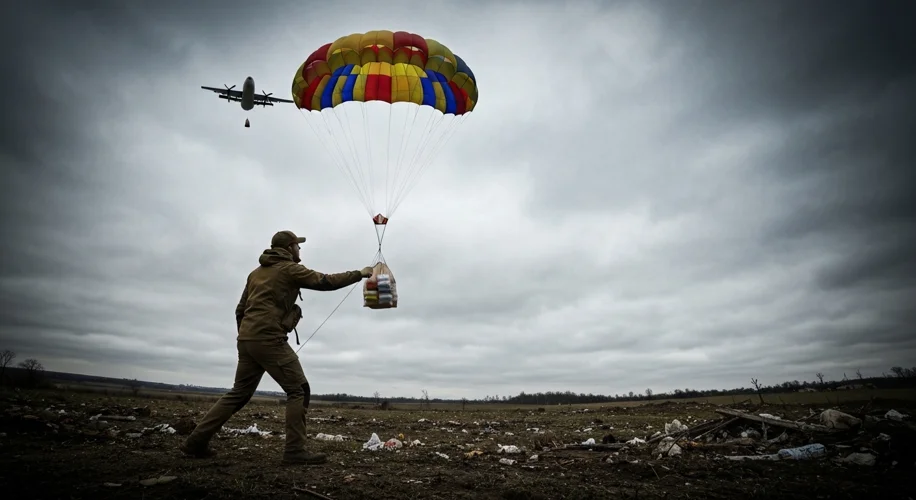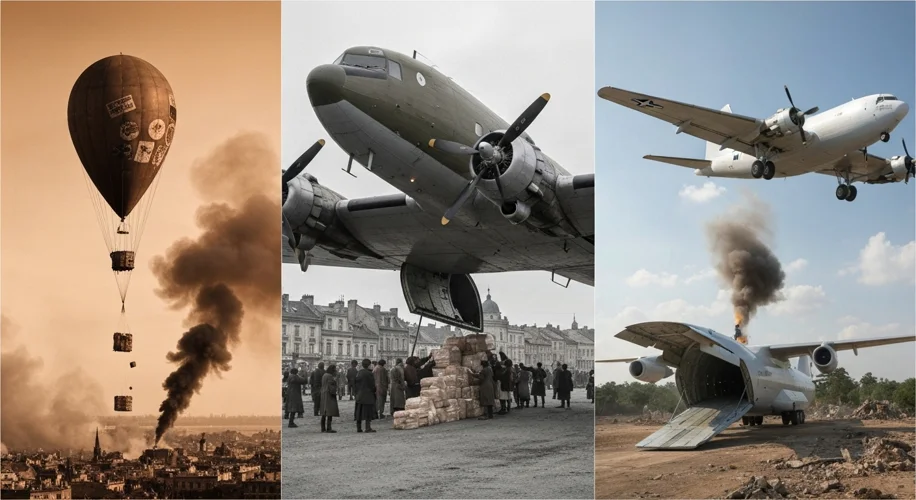In the annals of human compassion, few images are as striking as that of a cargo plane, a silver bird against a vast, indifferent sky, descending to deliver life-saving sustenance to a land gripped by despair. These are the moments when humanitarian aid airdrops, often born out of desperation, transform the very nature of disaster relief.
The concept of dropping supplies from the air, while seemingly modern, has roots that stretch back further than one might imagine. During the Siege of Paris in 1870-1871, as Prussian forces encircled the city, balloons became the sole means of communication and, crucially, of sending out and receiving mail and small parcels. While not strictly humanitarian aid in the modern sense, these airborne vessels represented an early form of aerial lifeline, a testament to humanity’s ingenuity when faced with isolation and scarcity.

However, the true dawn of humanitarian airdrops as a deliberate strategy for relief began to take shape with the advent of powered flight. The devastating Irish Potato Famine of the 1840s, a tragedy that decimated a nation, did not yet have the luxury of aerial intervention. But as the 20th century dawned and aircraft capabilities grew, the potential for air-delivered aid became a tangible reality.
A pivotal, albeit somber, moment arrived during World War II. The Warsaw Uprising of 1944 saw Polish resistance fighters bravely battling German occupation. While Allied powers were largely unable to provide significant ground support, they did attempt to airdrop supplies to the beleaguered city. However, the logistical challenges were immense. The aircraft had to fly long distances, often under heavy fire, and drop zones were difficult to pinpoint accurately. Moreover, the types of aid dropped – mainly ammunition and weapons – were primarily military in nature, though some food and medical supplies were also included.
The post-war era saw a significant evolution in the application of airdrops for humanitarian purposes. The Berlin Airlift (1948-1949) stands as a monumental testament to the power and scale of aerial relief. Following the Soviet Union’s blockade of West Berlin, the Western Allies orchestrated a massive, sustained operation to supply the city’s over two million inhabitants with everything they needed to survive – food, coal, medicine, and more. For nearly a year, hundreds of thousands of flights landed, delivering thousands of tons of supplies daily. It was a logistical marvel, a demonstration of political will matched by engineering prowess, and a powerful symbol of defiance and humanitarian commitment.

The Korean War and subsequent conflicts continued to refine airdrop techniques. Disasters like earthquakes and floods, which often cripple traditional transportation networks, became prime candidates for aerial intervention. The devastating 1970 Bhola cyclone in East Pakistan (now Bangladesh) highlighted the urgent need for rapid aid delivery to inaccessible areas. While initial efforts were hampered by the sheer scale of destruction, airdrops played a crucial role in reaching isolated communities.
The logistical complexities of humanitarian airdrops are staggering. They require precise weather forecasting, meticulous planning of flight paths to avoid conflict zones or treacherous terrain, and the ability to accurately drop supplies into designated, often rudimentary, drop zones. The types of supplies must be carefully chosen – lightweight, durable, and high in caloric value. Packaging is critical to prevent damage during the drop and to ensure ease of collection by recipients.
Beyond the technical challenges lie the human elements. For recipients, an airdrop can be a beacon of hope in the darkest of times. The sight of a parachute laden with food or medicine can mean the difference between life and death. However, the process of distribution on the ground also presents challenges. Ensuring that aid reaches those most in need, preventing hoarding or misuse, and managing the expectations of desperate populations are all critical considerations.
In recent decades, advances in technology have further enhanced the efficiency and safety of airdrops. GPS guidance systems allow for greater accuracy, while specialized aircraft and dropping systems have been developed. The use of drones for smaller-scale, targeted deliveries is also an emerging frontier.

The legacy of humanitarian airdrops is one of resilience, innovation, and unwavering compassion. From the besieged cities of the past to the remote corners of the globe affected by natural disasters, the aerial delivery of aid has consistently proven to be a vital tool in alleviating suffering and offering a tangible sign that the world has not forgotten.
It is a stark reminder that even when the earth is broken and paths are blocked, humanity will find a way to send hope from the heavens.

